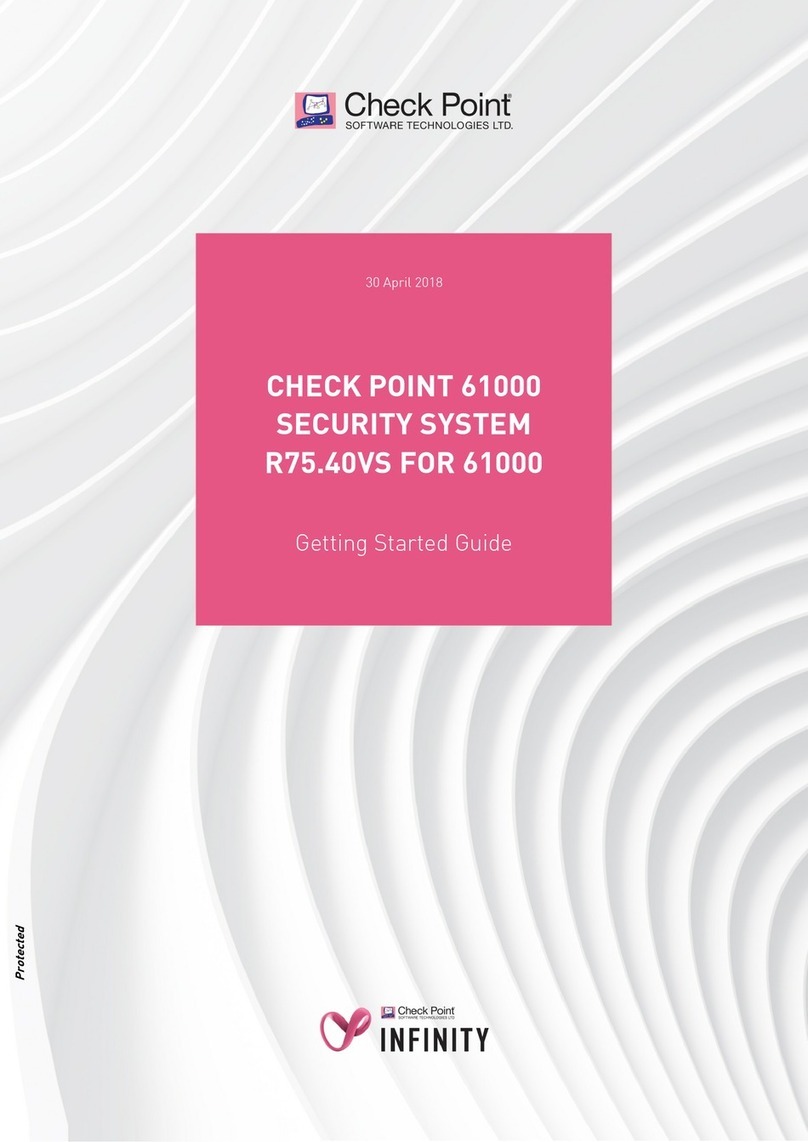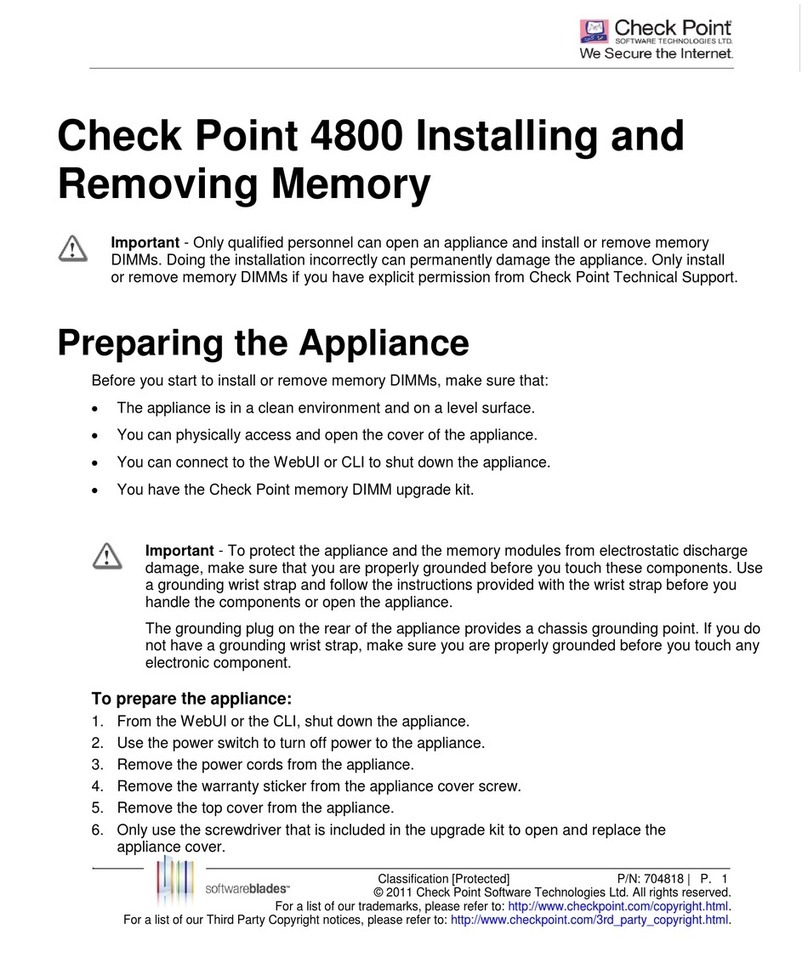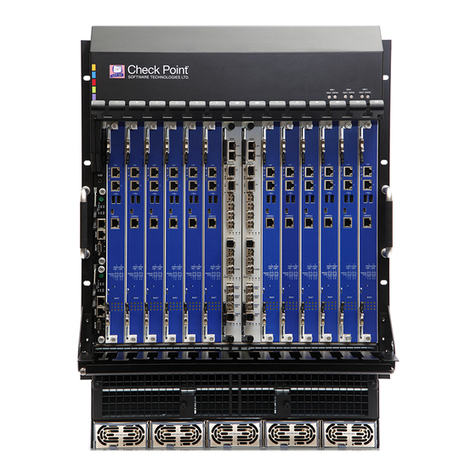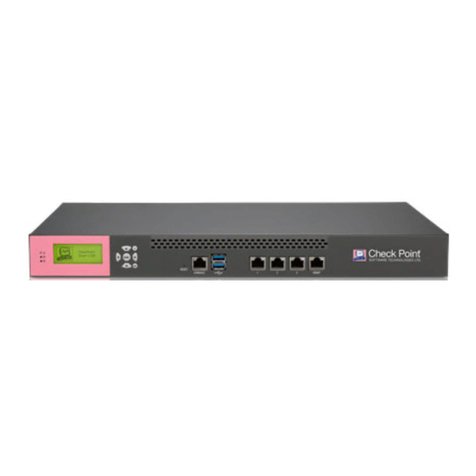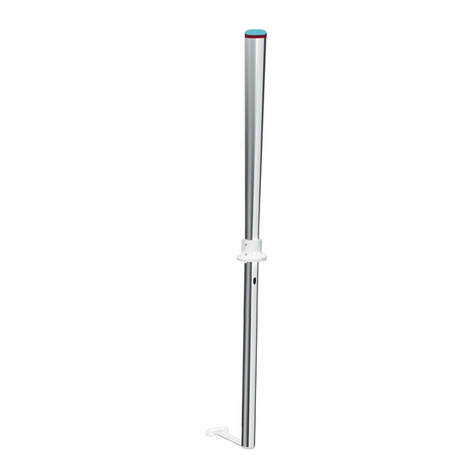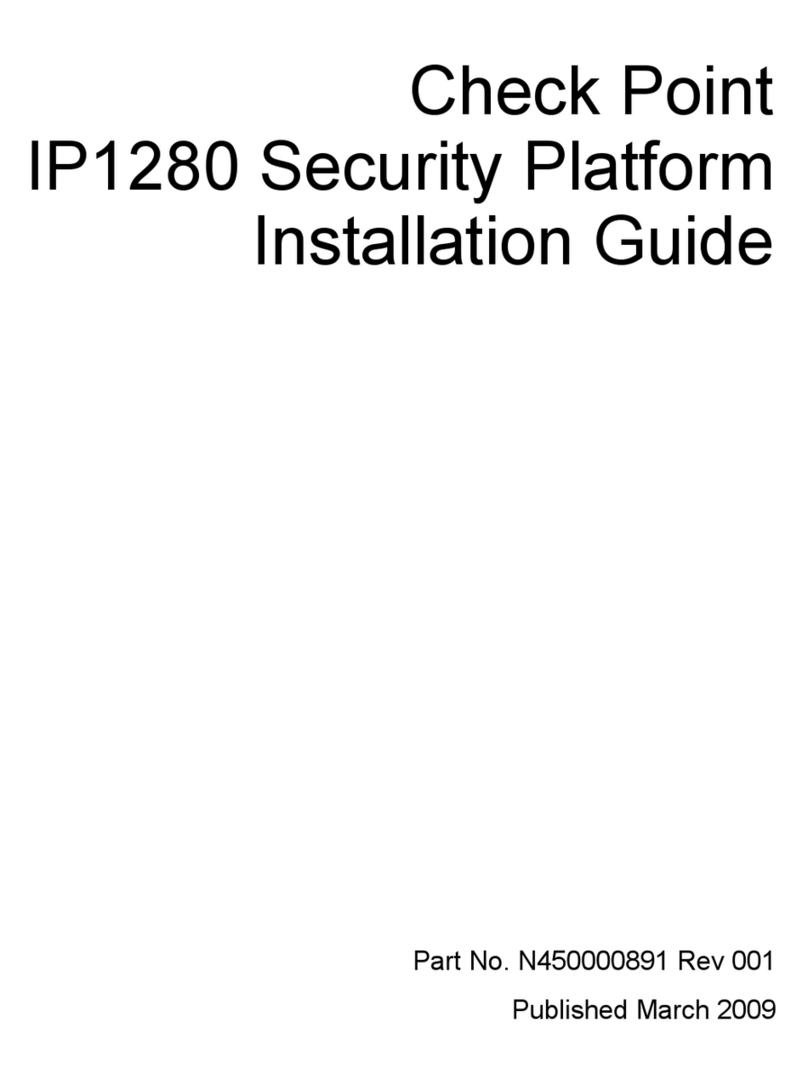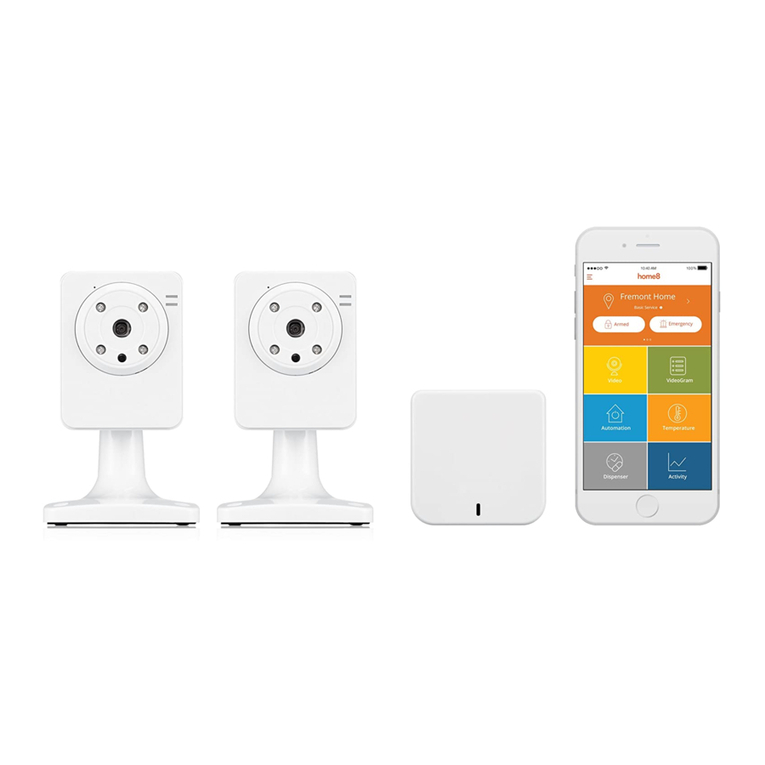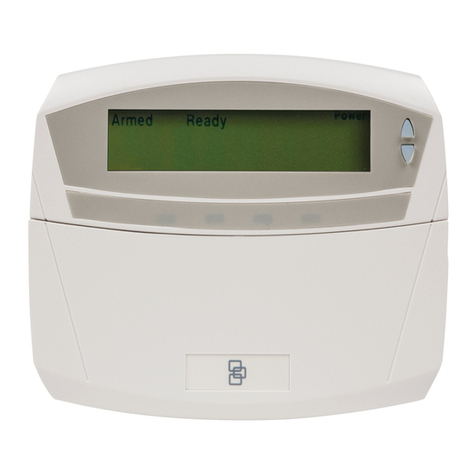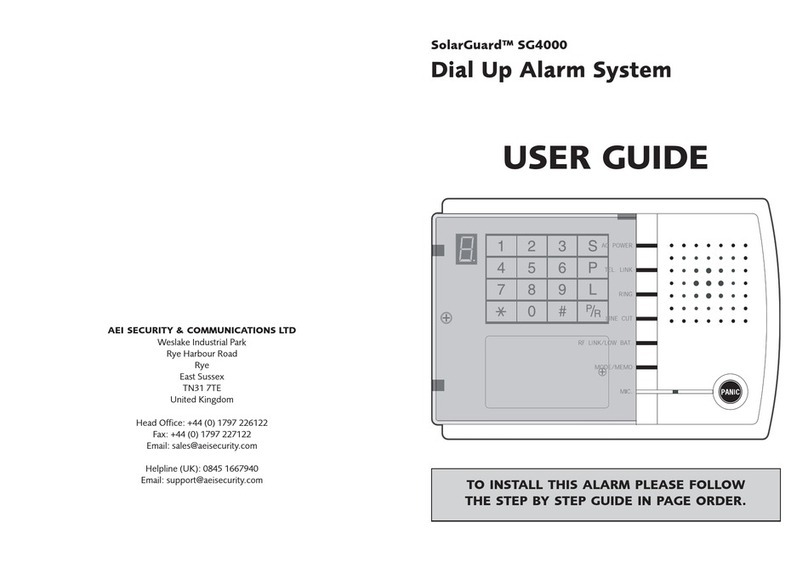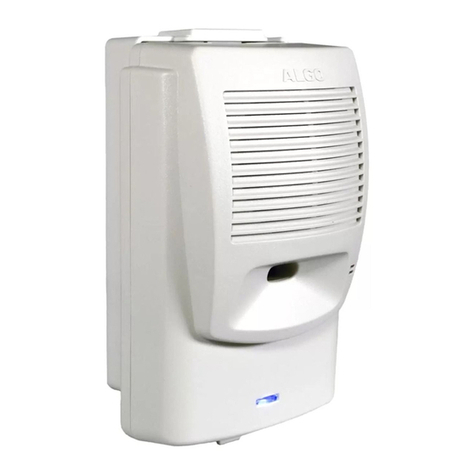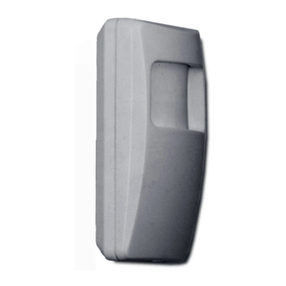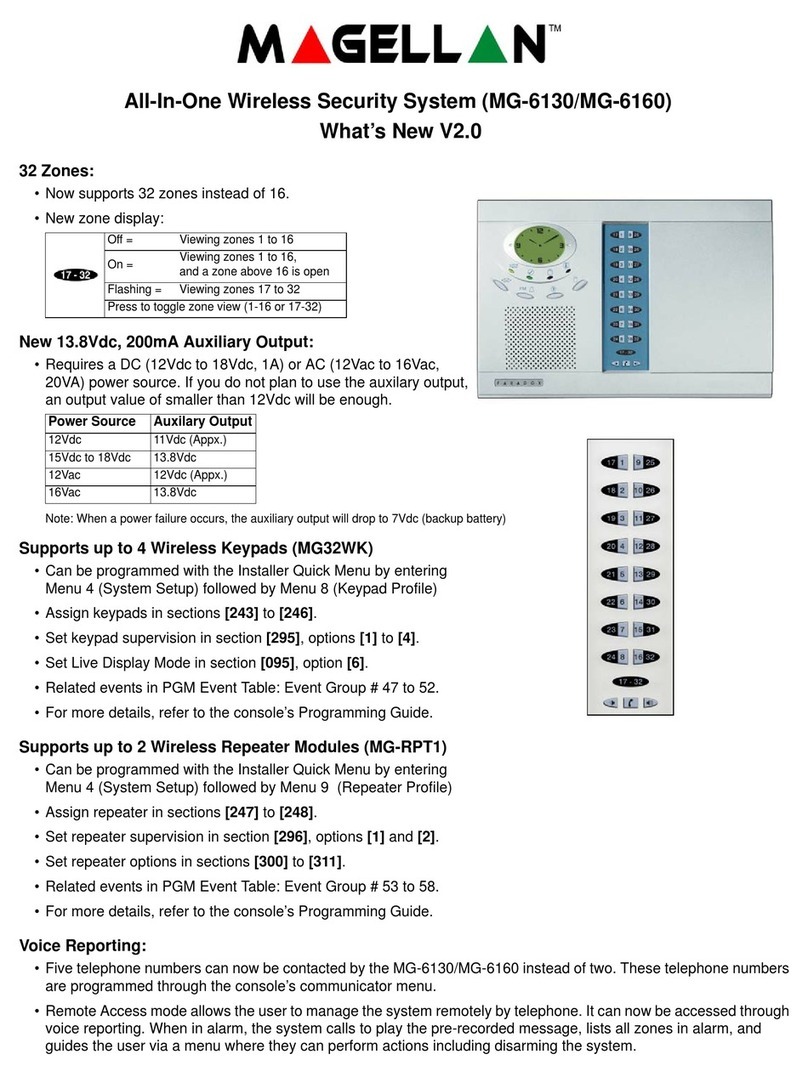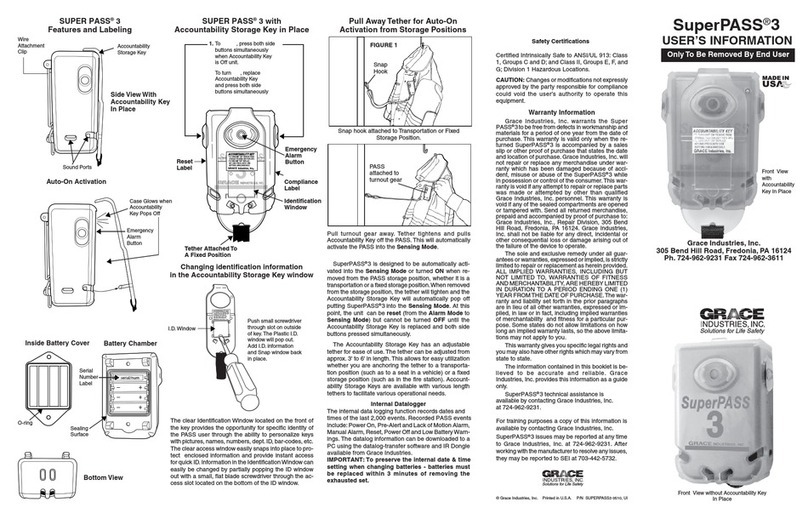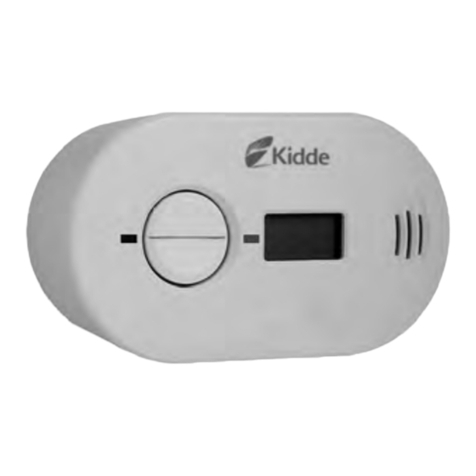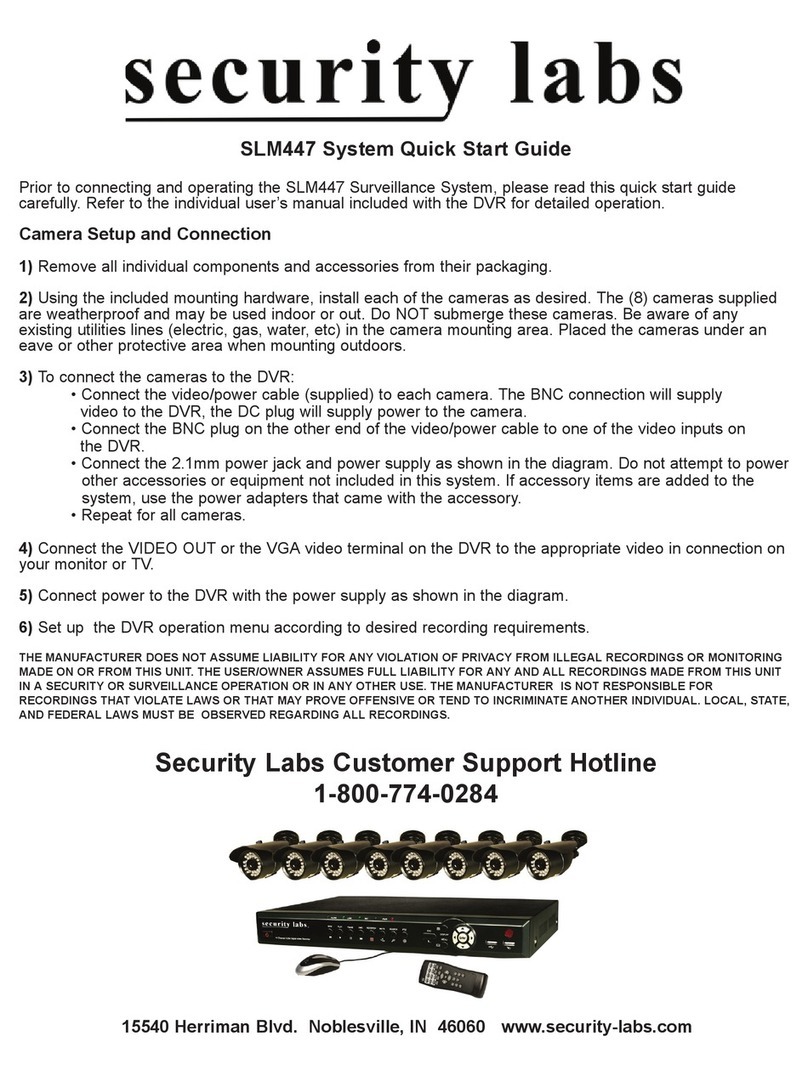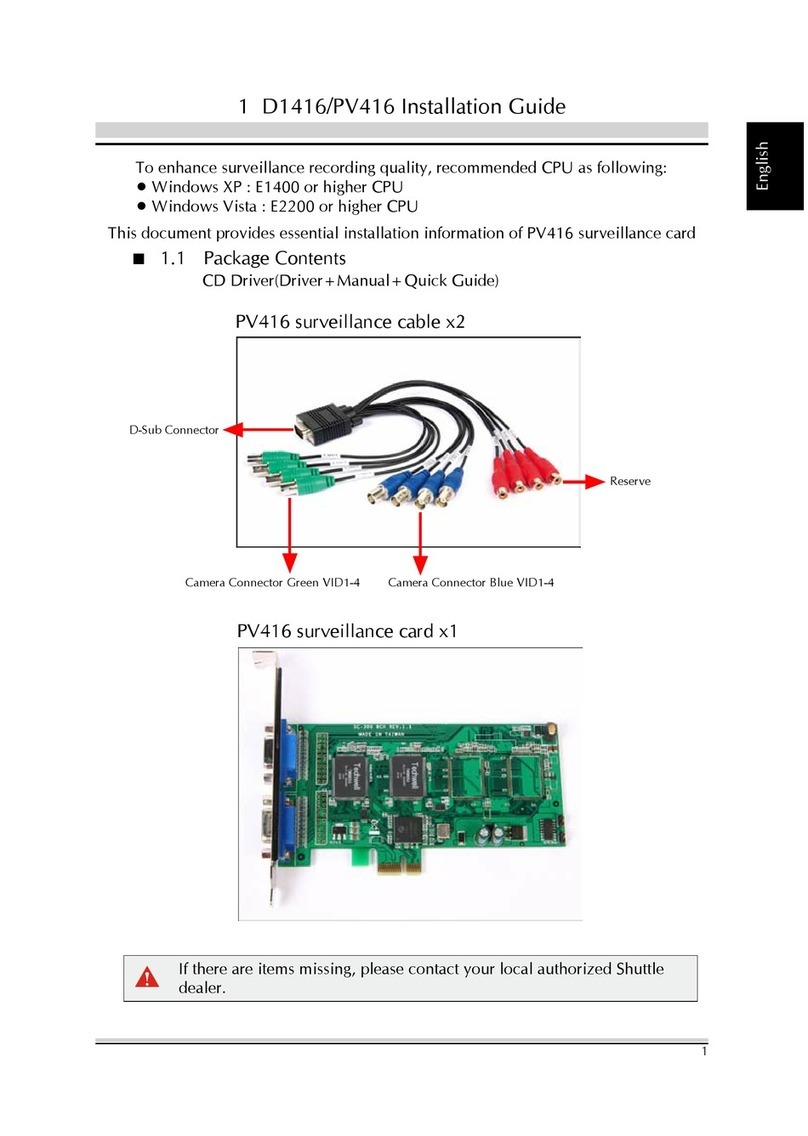Checkpoint Neo NP10 User manual

10071753
Title:
USER'S MANUAL
NP10, NP20, NG10
(ALL NEO SYSTEM MODELS)
REVISIONS
REVISIONS
REV
DESCRIPTION
DATE
ENGINEER
REV
DESCRIPTION
DATE
APPROVED
00
CR2660AB
05/30/18
S. SINGH
01
ECN8210
08/20/20
S. SINGH
02
ECN8212
10/06/20
S. SINGH
DOC SPEC
DATES
DWN
CHK
ENG
Size US
Letter 10071753
Used On
APPD
Scale: N/A
Checkpoint Systems, Inc. 2020
Page 1 of 28

USER'S MANUAL, NP10, NP20, NG10 (ALL NEO SYSTEM MODELS)
CHECKPOINT SYSTEMS, INC. FOR EXTERNAL USE
Document No. 10071753 Rev. 02 Page 2 of 28
Important Information to our Users in North America
FCC Regulatory Compliance Statement
Checkpoint Systems, Inc., offers Electronic Article Surveillance (EAS) or Radio Frequency Identification Products
that have been FCC certified or verified to 47 CFR Part 15 Subparts B/C. Appropriately, one of the following labels
will apply to the approval:
NOTE: This equipment has been tested and found compliant within the limits for a class A digital
device, pursuant to Part 15 of the FCC Rules. These limits are designed to provide reasonable
protection against harmful interference when the equipment is operated in a commercial environment.
This equipment generates, uses, and can radiate interference to radio communications. Operation of
this equipment in a residential area is likely to cause harmful interference in which case the user will be
required to correct the interference at own expense.
- OR -
This device complies with Part 15 of the FCC Rules. Operation is subject to the following two
conditions: (1) including this device may not cause harmful interference, and (2) this device must
accept any interference received, including interference that may cause undesired operation, which
may include intermittent decreases in detection and/or intermittent increases in alarm activity.
WARNING: Changes or modifications to Checkpoint’s EAS or Radio Frequency Identification (RFID) equipment not
expressly approved by the party responsible for assuring compliance could void the user’s authority to operate the
equipment in a safe or otherwise regulatory compliant manner.
WARNING: The installation location of the UHF antenna radiating structure must provide a minimum of 20cm [8in]
separation between the antenna and the human body. Please note that this compliance requirement applies to
select system models (specifically, any model that features RFID EPC reading). There is no such requirement for
systems (Pedestals) which are not equipped with an on-board UHF RFID Reader/Antenna system.
Industry Canada Regulatory Compliance Statement
This device complies with the Industry Canada license-exempt RSS standard(s). Operation is subject to the
following two conditions:
1. This device may not cause interference, and
2. This device must accept any interference, including interference that may cause undesired operation of the
device.
Le fonctionnement de l’ appareil est soumis aux deux conditions suivantes:
(1) Cet appareil ne doit pas perturber les communications radio, et
(2) cet appareil doit supporter toute perturbation, y compris les perturbations qui pourraient provoquer son
dysfonctionnement.
Equipment Safety Compliance Statement
Checkpoint’s Electronic Article Surveillance (EAS) products have been designed for safeness during normal use
and, where applicable have been certified, listed, or recognized in accordance with one or more of the following
safety standards; UL 60950-1, CSA C22.2 No. 60950-1-07. Additional approvals may be pending.
WARNING: Changes or modifications to Checkpoint’s EAS equipment not expressly approved by the party
responsible for assuring compliance could void the user’s authority to operate the equipment in a safe or otherwise
regulatory compliant manner.

USER'S MANUAL, NP10, NP20, NG10 (ALL NEO SYSTEM MODELS)
CHECKPOINT SYSTEMS, INC. FOR EXTERNAL USE
Document No. 10071753 Rev. 02 Page 3 of 28
Important Information to our Users in Europe
CE Regulatory Compliance Statement
Where applicable, Checkpoint Systems, Inc. offers certain Electronic Article Surveillance (EAS) products that have
CE Declarations of Conformity according to R&TTE Directive 99/5/EC, EMC Directive 2004/108/EC, and Low
Voltage Directive 2006/95/EC.
System Electromagnetic Compatibility (EMC) has been tested and notified through Spectrum Management
Authorities if necessary, using accredited laboratories, whereby, conformity is declared by voluntarily accepted
European Telecommunications Standards Institute (ETSI) standards EN 301489-3 and EN 302208 and/or EN
300330, as applicable.
NOTE: Certain Electronic Article Surveillance (EAS) equipment have been tested and found to conform
to the CE emission and immunity requirement in Europe. This equipment generates, uses, and can
radiate radio frequency energy and, if not installed and used in accordance with the instruction manual,
may cause harmful interference to radio communications. Under unusual circumstances, interference
from external sources may degrade the system performance, which may include intermittent decreases
in detection and/or intermittent increases in alarm activity. However, there is no guarantee that
interference will not occur in a particular installation. If this equipment experiences frequent
interference from external sources or does cause harmful interference to radio communications
reception, which can be determined by turning the equipment off and on, please contact a Checkpoint
Systems representative for further assistance.
RoHS Compliance Statement
The RoHS Directive stands for "the restriction of the use of certain hazardous substances in electrical and
electronic equipment." A RoHS compliant product means that electrical and electronic equipment cannot contain
more than maximum permitted levels of lead, cadmium, mercury, hexavalent chromium, polybrominated biphenyl
(PBB) and polybrominated diphenyl ether (PBDE). Checkpoint is in compliance with the RoHS directive.
WEEE Compliance Statement
The Waste Electrical and Electronic Equipment Directive (WEEE) applies to companies that manufacture, sell,
distribute, or treat electrical and electronic equipment in the European Union. There are a number of obligations
imposed on Checkpoint as a supplier of electrical and electronic equipment. Checkpoint's compliance approach for
each of these obligations is provided below.

USER'S MANUAL, NP10, NP20, NG10 (ALL NEO SYSTEM MODELS)
CHECKPOINT SYSTEMS, INC. FOR EXTERNAL USE
Document No. 10071753 Rev. 02 Page 4 of 28
WEEE Marking
All products that are subject to the WEEE Directive supplied by Checkpoint are compliant with the WEEE marking
requirements. Such products are marked with the "crossed out wheelie bin" WEEE symbol shown below in
accordance with European Standard EN 50419.
Information for Users
According to the requirements of European Union member state WEEE legislation, the following user information is
provided in English for all Checkpoint supplied products subject to the WEEE directive.
This symbol on the product or on its packaging indicates that the product must not be
disposed of with normal waste. Instead, it is your responsibility to dispose of your waste
equipment by arranging to return it to a designated collection point for the recycling of waste
electrical and electronic equipment. By separating and recycling your waste equipment at the
time of disposal you will help to conserve natural resources and ensure that the equipment is
recycled in a manner that protects human health and the environment. For information about
how to recycle your Checkpoint supplied waste equipment, please contact the Checkpoint
Systems, Inc. Field Service office in your region. Customers can obtain this information from
their system User Guide.
REACH Compliance Statement
The European REACH Regulation 1907/2006 on Registration, Evaluation, Authorization, and Restriction of
Chemicals (REACH), Annex XVII entered into force in June 2009, and affects all companies producing, importing,
using, or placing products on the European market. The aim of the REACH regulation is to ensure a high level of
protection of human health and the environment from chemical substances.
Checkpoint Systems’ substances management system follows and complies with the current revision of the REACH
Regulation on the substances as identified by ECHA (European Chemical Agency).
Checkpoint Systems’ products are considered articles as defined in REACH Article 3 (3).
These products/articles under normal and reasonable conditions of use do not have intended release of
substances. Therefore the requirement in REACH Article 7 (1) (b) for registration of substances contained in these
products/articles does not apply.
Checkpoint Systems’ products/articles do not contain Substances of Very High Concern or if there are SVHC in the
product/article, the content is less than the 0.1% (wt/wt) as defined by REACH Article 57, Annex XIV, Directive
67/548/EEC. Therefore the requirement in REACH Article 7 (2) to notify ECHA if a product/article contains more
than 0.1% wt/wt of an SVHC and tonnage exceeding 1 tonne per importer per year is not applicable.
Checkpoint Systems’ European operations do not manufacture or import chemicals, therefore Checkpoint Systems
no obligation to register substances.
Packaging Compliance Statement
No CFCs (chlorofluorocarbons), HCFCs (hydrofluorocarbons) or other ozone depleting sub-stances are used in
packaging material. Chromium, lead, mercury, or cadmium are not intentionally added to packaging materials and
are not present in a cumulative concentration greater than 100 ppm as incidental impurities. No halogenated
plastics or polymers are used for packaging material. Checkpoint complies with the EU Directive 94/62/E.

USER'S MANUAL, NP10, NP20, NG10 (ALL NEO SYSTEM MODELS)
CHECKPOINT SYSTEMS, INC. FOR EXTERNAL USE
Document No. 10071753 Rev. 02 Page 5 of 28
TABLE OF CONTENTS
1.0 INTRODUCTION ............................................................................................................................. 7
1.1 System Identification....................................................................................................................7
1.2 System Level Checkpoint Part Numbers (SKUs) .........................................................................7
1.2.1 Obsoleted System Models ................................................................................................................................9
1.3 Using this Guide ..........................................................................................................................9
1.3.1 Reference Documents (See Also): ....................................................................................................................9
2.0 GENERAL DESCRIPTION............................................................................................................ 10
2.1 EAS Features.............................................................................................................................10
2.1.1 Radio Frequency Band ...................................................................................................................................10
2.1.2 Electronic Mode of Operation ........................................................................................................................10
2.1.3 Configurable alarm sound/light color .............................................................................................................10
3.0 Quick Connect Interfaces................................................................................................................. 11
4.0 System Hardware............................................................................................................................. 12
4.1 System Controller ......................................................................................................................12
4.1.1 USB Ports on the System Controller ..............................................................................................................12
4.1.2 Spare Part Information....................................................................................................................................12
4.2 All Hardware found in Upper Bay.............................................................................................12
4.2.1 Light and Speaker Board ................................................................................................................................12
4.2.2 LED Board .....................................................................................................................................................13
4.2.3 Speaker...........................................................................................................................................................13
4.2.4 USB Devices ..................................................................................................................................................13
4.3 EAS Sensor (TR4300 board)......................................................................................................13
4.3.1 Spare Part information....................................................................................................................................14
4.4 A1207 PAB/SAB Splitter Board.................................................................................................14
4.5 Hub Board .................................................................................................................................15
4.6 RFID Reader .............................................................................................................................16
4.7 Remaining Hardware ................................................................................................................16
4.7.1 Matching Board..............................................................................................................................................16
4.7.2 GPIO Module .................................................................................................................................................16
4.7.3 Quick Connect Cables ....................................................................................................................................16
4.7.4 Power Supply .................................................................................................................................................17
5.0 SPECIFICATIONS.......................................................................................................................... 18
5.1 Overall Size ...............................................................................................................................18
5.2 EAS Sensor ................................................................................................................................18
5.3 PAB/SAB Splitter Board ............................................................................................................19
5.4 System Controller ......................................................................................................................20
5.5 Light and Speaker Board...........................................................................................................20
5.6 IO Board (GPIO Module)..........................................................................................................21
5.7 Audio Speaker............................................................................................................................21
5.8 LED Board.................................................................................................................................22
5.9 Hub Board .................................................................................................................................22
5.10 RFID Reader .............................................................................................................................23
5.11 Environmental ...........................................................................................................................23
6.0 USING DMS TO APPLY SOFTWARE SETTINGS ..................................................................... 24
7.0 POWER SUPPLY REQUIREMENTS............................................................................................ 25

USER'S MANUAL, NP10, NP20, NG10 (ALL NEO SYSTEM MODELS)
CHECKPOINT SYSTEMS, INC. FOR EXTERNAL USE
Document No. 10071753 Rev. 02 Page 6 of 28
7.1 General Details .........................................................................................................................25
7.1.1 Approved PSU Model ....................................................................................................................................25
7.1.2 Plenum PSU Installation.................................................................................................................................26
7.2 PSU 1:1 Rule .............................................................................................................................26
7.3 Other Safety Considerations......................................................................................................26
7.4 Ferrite Core Installation ...........................................................................................................26
7.4.1 Quick Connect cable has Ferrite Core pre-applied .........................................................................................26
7.4.2 Optional Ferrite on DC Cord near PSU AC/DC Adapter................................................................................27
8.0 DEVICE LABELING...................................................................................................................... 28
8.1 Internal Label ............................................................................................................................28
8.2 External Label ...........................................................................................................................28
LIST OF FIGURES
FIGURE 1: NP10.......................................................................................................................................................................... 7
FIGURE 2: NP20.......................................................................................................................................................................... 7
FIGURE 3: NG10 ......................................................................................................................................................................... 7
FIGURE 4: QUICK CONNECT....................................................................................................................................................... 11
FIGURE 5: MAX. CABLES ............................................................................................................................................................ 11
FIGURE 6: PEDESTAL MOUNTING .............................................................................................................................................. 11
FIGURE 7: USB WIFI MODULE (DONGLE) AND USB EXTENSION CABLE...................................................................................... 13
FIGURE 8: EAS SENSOR............................................................................................................................................................. 13
FIGURE 9: PAB (ABOVE LEFT) AND SAB (ABOVE RIGHT): HARDWARE IN EACH PEDESTAL, RF SIGNAL ROUTING..................... 15
FIGURE 10: 50W POWER SUPPLY............................................................................................................................................... 25
FIGURE 11: IEC CORD (NOT INCLUDED)..................................................................................................................................... 25
FIGURE 12: DC POWER EXTENSION CABLE (INSIDE SYSTEM) ................................................................................................... 26
FIGURE 13: COMMON FERRITES ................................................................................................................................................ 27
FIGURE 14: OPTIONAL FERRITE CORE PLACEMENT, NEAR PSU ADAPTER ............................................................................... 27
LIST OF TABLES
TABLE 1-1: BASE CONFIGURATION OR "RF ONLY" MODELS................................................................................... 7
TABLE 1-2: RF/HUB MODELS............................................................................................................................................. 8
TABLE 1-3: PAB/SAB MODELS .......................................................................................................................................... 8
TABLE 1-4: RFID-ENABLED NEO MODELS..................................................................................................................... 9
TABLE 1-4: OBSOLETE (PHASE 1) ANTENNAS............................................................................................................. 9
TABLE 4-1: UPPER BAY SPARES ..................................................................................................................................... 12
TABLE 4-2: LOWER BAY SPARES..................................................................................................................................... 14

USER'S MANUAL, NP10, NP20, NG10 (ALL NEO SYSTEM MODELS)
CHECKPOINT SYSTEMS, INC. FOR EXTERNAL USE
Document No. 10071753 Rev. 02 Page 7 of 28
1.0 INTRODUCTION
The released NEO System Models include NP10, NP20 and NG10. There are various
hardware options, all of which are described in this document. The part numbers of each
specific model are listed following the photos.
1.1 System Identification
Figure 1: NP10
Figure 2: NP20
Figure 3: NG10
1.2 System Level Checkpoint Part Numbers (SKUs)
Checkpoint Part Number (CKP P/N) can be considered the SKU of the Finished Good. In
SAP you will find these "System SKU" part numbers listed as the Material Item #. Check
SAP to determine which NEO Antennas are currently stocked in your local warehouse:
Table 1-1: Base Configuration or "RF Only" Models
Model Name
System SKU
Omnify Description
NP10 2.7M
10079290
*NP10 PRI WHT
10063949
*NP10 PRI GREY RAL 7024
NP20 2.4M
10046573
*NP20 PRI WHT
10089329
*NP20 PRI GREY RAL 7024

USER'S MANUAL, NP10, NP20, NG10 (ALL NEO SYSTEM MODELS)
CHECKPOINT SYSTEMS, INC. FOR EXTERNAL USE
Document No. 10071753 Rev. 02 Page 8 of 28
Model Name
System SKU
Omnify Description
NG10 2.7M
10034928
*NG10 PSB WHT
10034982
*NG10 PSB GRY RAL 7024
10034929
*NG10 PSB WHT W/COLES LOGO
Table 1-2: RF/HUB Models
Model Name
System SKU
Omnify Description
NP10 2.7M with Hub Board
10144163
*NEO NP10 PSB RF/HUB WHT
10144162
*NEO NP10 PSB RF/HUB GREY RAL7024
NP20 2.4M with Hub Board
10144110
*NEO NP20 PSB RF/HUB WHT
10144161
*NEO NP20 PSB RF/HUB GREY RAL7024
NG10 2.7M with Hub Board
10034851
*NG10 PSB/HUB WHT
10034983
*NG10 PSB/HUB GRY RAL 7024
10034663
*NG10 PSB/HUB WHT W/COLES LOGO
Table 1-3: PAB/SAB Models
Model Name
System SKU
Omnify Description
NP10 PAB Models
10035203
*NP10 PAB WHT
10035204
*NP10 PAB GREY
NP10 PAB W/HUB Models
10035205
*NP10 PAB W/HUB WHT
10035206
*NP10 PAB W/HUB GREY
NP10 SAB Models
10035207
*NP10 SAB WHT
10035209
*NP10 SAB GREY
NP20 PAB Models
10035210
*NP20 PAB WHT
10035212
*NP20 PAB GREY
NP20 PAB W/HUB Models
10035213
*NP20 PAB W/HUB WHT
10035214
*NP20 PAB W/HUB GREY
NP20 SAB Models
10035215
*NP20 SAB WHT
10035216
*NP20 SAB GREY
NG10 PAB Models
10035217
*NG10 PAB WHT
10035218
*NG10 PAB GREY
NG10 PAB W/HUB Models
10035219
*NG10 PAB W/HUB WHT
10035220
*NG10 PAB W/HUB GREY
NG10 SAB Models
10035221
*NG10 SAB WHT
10035222
*NG10 SAB GREY
Note: RFID is not an option for PAB/SAB.

USER'S MANUAL, NP10, NP20, NG10 (ALL NEO SYSTEM MODELS)
CHECKPOINT SYSTEMS, INC. FOR EXTERNAL USE
Document No. 10071753 Rev. 02 Page 9 of 28
Table 1-4: RFID-Enabled NEO Models
Model Name
System SKU
Omnify Description
NP10 RF/RFID with
FCC Tuned Patch
10068754
*NP10 RF/RFID FCC WHT
10034341
*NP10 RF/RFID FCC GREY
NP10 RF/RFID with ETSI
Tuned Patch
10034339
*NP10 RF/RFID CE WHT
10034340
*NP10 RF/RFID CE GREY
NP20 RF/RFID with
FCC Tuned Patch
10073950
*NP20 RF/RFID FCC WHT
10034345
*NP20 RF/RFID FCC GREY
NP20 RF/RFID with ETSI
Tuned Patch
10034342
*NP20 RF/RFID CE WHT
10034343
*NP20 RF/RFID CE GREY
1.2.1 Obsoleted System Models
No longer manufactured Antennas are listed in Table 1-4 below. See Obsolete [O] in Omnify Description.
Table 1-5: Obsolete (Phase 1) Antennas
Model Name
System SKU
Description
NP10 2.2M
10039741
[O] *NP10 PRI 2.2M WHT
10054864
[O] *NP10 PRI 2.2M GREY RAL 7024
NP20 2.0M
10066694
[O] *NP20 PRI 2.0M WHT
10048562
[O] *NP20 PRI 2.0M GREY RAL 7024
1.3 Using this Guide
You can review NEO features and learn about the hardware which provides functionality in this document.
For Product Specifications, please see Section 5.0.
This document does not provide any instructions for installation or site planning. Please refer to the other
supporting documents and training materials which are available online. Section 1.3.1 below lists the
Document Part Numbers (CKP P/N) and their latest revisions (at the time of this publication).
1.3.1 Reference Documents (See Also):
For NP10/20 "Quick Start" help, refer to CKP P/N 10051515 Rev 02 or later.
For NG10 "Quick Start" help, refer to CKP P/N 10035026 Rev 00 or later.
For long form Installation Manual help for any system, refer to CKP P/N 10078945 Rev 00 or later.

USER'S MANUAL, NP10, NP20, NG10 (ALL NEO SYSTEM MODELS)
CHECKPOINT SYSTEMS, INC. FOR EXTERNAL USE
Document No. 10071753 Rev. 02 Page 10 of 28
2.0 GENERAL DESCRIPTION
2.1 EAS Features
2.1.1 Radio Frequency Band
Detection Limited to 8.2 MHz
•No “Application Based Detection Mode” (7.6, 9.0 detection).
•NEO is tuned to achieve detection of HF targets at 8.2MHz ±5% radio frequency.
•Tags tuned to other frequencies may or may not produce the alarm; expect a noticeable drop in
performance for any non 8.2 tag.
•By product management and design team choice, working from voice of customer, the feature was
removed intentionally. Now the only supported band is 8.2 - different from Evolve/Liberty Systems.
Currently for NEO Antennas, please consider alterative tuning & dual frequency no longer supported.
2.1.2 Electronic Mode of Operation
Detector mode was introduced first. PAB/SAB mode is now available. The two available Electronic Modes
of Operation are described below. Both modes are considered Pulse Listen technology, but mode selection
will cause TX/RX differences described in more detail below.
Any PRI model antenna should run in "Detector" mode, whereas a PAB should run in "PAB/SAB."
The NEO System Controller and EAS Sensor require minimum Software, Firmware and FPGA version to
support PAB/SAB. New supported FPGA version(s) will also support the alternate mode which is Detector.
Please note a physical PAB is technically allowed to operate in "Detector" mode (and a PRI model could
run in PAB/SAB), and when the result is a System running in the non-standard mode—whether the FS
Technician does so intentionally or unknowingly—this does NOT cause a regulatory compliance issue,
but it is expected that system performance would suffer. Therefore, always install the recommended FPGA
(Software/Firmware package) and set up your pedestals in the mode which supports your hardware use case.
2.1.3 Configurable alarm sound/light color
Using DMS (see section 6.0), the Field Service Technician is able to choose from a set of pre-loaded Sound
Files (.mp3 format) or otherwise import a file, a replacement sound requested by the customer, then assign it
as the default EAS Alarm sound. The color is also selectable from a range of visual colors and patterns.

USER'S MANUAL, NP10, NP20, NG10 (ALL NEO SYSTEM MODELS)
CHECKPOINT SYSTEMS, INC. FOR EXTERNAL USE
Document No. 10071753 Rev. 02 Page 11 of 28
3.0 QUICK CONNECT INTERFACES
All NEO Family Antennas are equipped with a technology called "Quick Base" and required
Quick Connect Cables. The minimum three (3) cables are DC Power Input, General Purpose
Outputs (GPO) (Relay contact pairs) and General Purpose Inputs (Digital Inputs) (GPI).
•Base configuration has 3 cables total, and the "with Hub" antennas have 4 cables.
•The number of cables needed will vary per system, per site.
Minimum connections:
Maximum connections:
1. +24V DC Power
Figure 4: Quick Connect
1. +24V DC Power
2. GPO- J6
3. GPI- J8
4. Network
Figure 5: Max. cables
Network is available on the "with Hub" models only.
There is no way to repurpose the GPI or GPO cable to provide
this feature, because other hardware is missing.
•Mounting occurs immediately after securing cable connections. Critical details are below:
Figure 6: Pedestal Mounting
•One of these is required:
2.5mm T-Wrench
or 2.5mm Allen key
•Each Extension Cable gets aligned to the appropriate
permanent-installation cable. Three (3) RJ-45 connectors are
provided in the installation kit, for building cables.
•Finally, the Field Service Technician / Installer will bring the
antenna upright (see Figure 6), and then tighten screws.
1
1
4 3 2

USER'S MANUAL, NP10, NP20, NG10 (ALL NEO SYSTEM MODELS)
CHECKPOINT SYSTEMS, INC. FOR EXTERNAL USE
Document No. 10071753 Rev. 02 Page 12 of 28
4.0 SYSTEM HARDWARE
4.1 System Controller
Excluding SAB Antennas, every NEO includes one (1) EAS Sensor and antenna wiring,
and one (1) System Controller and control cabling. The System Controller is one of the
central devices. USB devices and the Light and Speaker board interface directly with it.
A 64-Bit Processor runs the embedded software and firmware, which work together
to control all high-level and low-level operations. An example of a high-level (software)
operation is reporting to the cloud; an example of a low-level (firmware) operation is
controlling the hardware.
For wireless functionality, the System Controller relies on auxiliary devices (e.g.
Bluetooth dongle). The USB Ports and Ethernet port are described in more detail below.
The system controller receives 5.0V / 3A regulated DC power from the Light and Speaker
board covered in section 4.2.1 below.
4.1.1 USB Ports on the System Controller
There are three (3) connection ports are USB Ports and one (1) is an Ethernet port (RJ-45) on one side of the
System Controller. Each USB Port has a designated function (e.g. the port for Bluetooth; the port for the
Data cable). When you need to swap (or install) an accessory module, be sure you are installing your device
in the correct port. The Ethernet port is a wired "Service Interface," used only by MFG and/or field service.
4.1.2 Spare Part Information
The complete "Upper Bay / SOM Assemblies" are different per system.
See Table 4-1 for each unique model:
Table 4-1: Upper Bay Spares
Model Name
SAP Material code
Description
"SOM" Used in NG10
10034668
^SOM,NG10
Upper Bay "SOM" in NP10
10034644
^UPPER BAY,NP10 RF & RF/HUB
Upper Bay "SOM" in NP20
10034646
^UPPER BAY,NP20 RF & RF/HUB
4.2 All Hardware found in Upper Bay
4.2.1 Light and Speaker Board
The Lights and Speaker board (CKP P/N 10077571) mates directly with the system controller. +24V DC
power arrives from the lower bay. The PCB features power regulators, a real-time clock with battery
backup, an Audio amplifier, and RGB Light driver.

USER'S MANUAL, NP10, NP20, NG10 (ALL NEO SYSTEM MODELS)
CHECKPOINT SYSTEMS, INC. FOR EXTERNAL USE
Document No. 10071753 Rev. 02 Page 13 of 28
4.2.2 LED Board
The LED Board has 10 LEDs which are each comprised of 3 RGB LEDs, 3 sub-LEDs per every 1 Multi-
color LED. The LED Board also has a small momentary switch, which is a push button; only Field Service
is expected to use this interface.
4.2.3 Speaker
NEO features an audio speaker, which is distinctly different from a piezo type "buzzer". Read more about
the Speaker in section 5.6.
4.2.4 USB Devices
The USB Bluetooth module (dongle), WiFi module and Cell Modem module are all similar in form-factor.
WiFi and Cell Modem are mutually exclusive options (one or the other). Refer to the installation manual for
more detail.
Figure 7: USB WiFi module (dongle) and USB Extension cable
Note: An extension cable is used. If you have issues with a device, you can try removing the extension
cable. You can also try reseating the connector or repositioning the module.
4.3 EAS Sensor (TR4300 board)
The TR4300 (CKP P/N 10053101) is a TX/RX transceiver we call "EAS Sensor" or
"TR4300 board."
Figure 8: EAS Sensor
The EAS Sensor gives rise to the EAS Detection System. To successfully detect real
alarm events and not trigger due to “phantoms,” the EAS Sensor has electronic tuning and
digital signal processing. RF tuning is outside the scope of this document.
There are no jumpers on the TR4300. Like earlier "Evolve" main boards, the TR4300 has
an FPGA (field programmable gate array) with processor and memory functions. Metal
Shields are equipped (separate shields for Rx and Tx circuit sections). Manufacturing

USER'S MANUAL, NP10, NP20, NG10 (ALL NEO SYSTEM MODELS)
CHECKPOINT SYSTEMS, INC. FOR EXTERNAL USE
Document No. 10071753 Rev. 02 Page 14 of 28
ensures tightness. Connectors are also "dressed" or pre-installed at the time of
manufacture.
The TR4300 board is mounted in a subassembly referred to as the "Cage" or sometimes
"Board Carrier" (also "PCBA" for PCB Assembly). The entire cage is the spare. See Table
4-2 for the spare or upgrade part numbers (SAP Material code).
At the time of this publication, all actively manufactured NEO systems require TR4300
(CKP P/N 10053101) with hardware Revision 11 (or later). Refer to the NEO Installation
Manual for details on how to check the Revision of your hardware.
4.3.1 Spare Part information
To order a spare:
Table 4-2: Lower Bay Spares
Model Name
SAP Material code
Description
Complete Cage for any
PRI Model Antenna
10058664
^LOWER BAY,ELEC NEO RF ONLY
Complete Cage for
RF/HUB Model
10144164
^LOWER BAY,ELEC NEO RF/HUB
Complete replacement, rather than replacing a single failed PCB, speeds up service times.
The installation manual has procedures on lower bay replacement and upgrade.
4.4 A1207 PAB/SAB Splitter Board
As described above, each EAS Sensor has 2 RF transmit/receive circuits. When running in
PAB/SAB, the 2 transmit/receive circuits operate in a different mode, and they are
physically connected to PCB hardware called the "Splitter Board" (CKP P/N 10034597)
which features a 1:2 RF split and LED signal routing.
With PAB/SAB, there is a "Primary" pedestal which contains the EAS Sensor (TR4300)
and a Splitter Board (A1207), and there is a "Secondary" pedestal, which contains only
the Splitter Board (A1207). From the EAS Sensor, 1 transmitter controls the primary side
and 1 transmitter controls the secondary side.
Every set of adjacent pedestals includes one splitter board in the Primary and one in the
Secondary. Cables are ran between the devices. The terminology "PAB" and "SAB"
applies because the splitter board can be used either as the "Primary Antenna Board"
(PAB) (or Primary Splitter Board), and when installed at the secondary, the splitter board
can be referred to as the "Secondary Antenna Board" (SAB) or Secondary Splitter Board.
Unlike Evolve 2, there are no required jumper settings to reconfigure for PAB or SAB
operation. The only jumper on the PCB is used only at the SAB for selecting the LED
color.

USER'S MANUAL, NP10, NP20, NG10 (ALL NEO SYSTEM MODELS)
CHECKPOINT SYSTEMS, INC. FOR EXTERNAL USE
Document No. 10071753 Rev. 02 Page 15 of 28
There is no BUZZER I/O on the NEO Splitter board.
Note that both PAB and SAB systems also contain one "Coupler board" (impedance
matching board). The diagram below shows the 8.2 MHz RF signal path (other cabling
and hardware features not depicted), showing how TX1 and TX2 are used in this scenario:
Figure 9: PAB (above left) and SAB (above right): Hardware in each pedestal, RF signal routing
4.5 Hub Board
The A1204 Hub Module delivers optional features, namely Wired connectivity, utilizing
the LAN9514 USB Hub and Ethernet Controller IC.
There is 1 USB Upstream port – used for the Upper Bay data connection (USB 2.0
interface with the System Controller).
USB Downstream ports (4) are used as follows:
1. EAS Sensor connection (USB to UART).
2. External USB-to-Ethernet dongle which is only used on the Master system (which
connects to the External network). The Hub Board has an 10/100 PHY Ethernet
switch (unmanaged switch).
3. RFID Reader - USB data - via J19 board to board connector, 2x8 Pin Header.
The Hub Board also has load switches, allowing it to supply +12V DC to the RFID
Reader. The Hub Board also has two (2) RJ-45 connectors. These are labeled OUT and
IN, and have the Sync dedicated pins for Sync Out / Sync In chaining. 8-Conductor
Cables (Shielded Cat 5e / Cat 6 or better) are installed between the systems next to one
another, allowing all the RFID reader/antenna systems to maintain synchronization.

USER'S MANUAL, NP10, NP20, NG10 (ALL NEO SYSTEM MODELS)
CHECKPOINT SYSTEMS, INC. FOR EXTERNAL USE
Document No. 10071753 Rev. 02 Page 16 of 28
4.6 RFID Reader
The NEO "Fast Track" RFID Reader (CKP P/N 10079516) is installed in NEO RF/RFID
Dual system. These are not officially released but can be considered released for beta
installation (i.e. the hardware can be installed for test; beta systems are always labeled
"Not for sale"). The RFID Reader is part of the Lower Bay "Cage" assembly. There is
RG-316 coaxial cable pre-wiring for 2 RFID Antenna Arrays (2 Patch per array) which
are part of the main sub-assembly. The hardware wiring is considered Active/Passive.
The RF/RFID system hardware includes an I/O interface board for cabling between
adjacent pedestals. Each pedestal's active side must be facing the neighboring pedestal's
passive side. This is the standard RFID hardware layout requiring in-floor cabling.
4.7 Remaining Hardware
4.7.1 Matching Board
An important part of the antenna in the RF Circuit is the antenna impedance matching board or "coupler
board" for short. The FS Technician should never have to inspect/repair a coupler board, because they are
Factory-Installed and Ready "As Manufactured." On the NEO Coupler boards, there is no tuning (no PCB
Jumpers, which is different from Evolve).
4.7.2 GPIO Module
NEO also features a simple I/O board which two (2) of the Quick Connect Cables are pre-installed into from
the factory. The Quick Start guide offers complete pin-out tables and basic software setup instructions.
The available interfaces are defined below.
GPO J6
This RJ-45 port is for triggering external devices.
There are Relay NO/NC contact pairs, which must be enabled using DMS.
2 unique relays are present (2 available in hardware/software).
GPI J8
This RJ-45 port is for accepting input signals.
There are 4 inputs which can be "mapped" to various events (advanced setup required).
CPiD-RF J5
There is also a CPiD-RF Serial Data interface available (opening the system is required); the ferrite core in the
installation kit shall be used on the Cat 5e / Cat 6 or better cable, if installed, to the J5 serial port.
The NEO Installation Manual describes the hard-wired connection which is used to integrate CPiD-RF
Deactivator (or deactivator chain using the CPiD Communications Module or "CAM").
4.7.3 Quick Connect Cables
See section 3.0 above (cables are identified and their functionality is described).
In the installation process, the cable interfaces and cables are joined before the mounting process.

USER'S MANUAL, NP10, NP20, NG10 (ALL NEO SYSTEM MODELS)
CHECKPOINT SYSTEMS, INC. FOR EXTERNAL USE
Document No. 10071753 Rev. 02 Page 17 of 28
24V Power Input
Inside NEO: +24V = White Cable (this pole of the Orange Connector has the Black stripe)
NEO
side
From
PSU
The power connection is a "tool less" connector (only wire strippers/cutters are needed to prep the wire
leads, no screw driver is required).
If the provided connector fails during use, the FS Technician may install the DC power using a UL-
approved wire connector junction such as 2-Position terminal block (CKP P/N 7155630) or equivalent.
Insulated connectors with a locking lever are also common (approved for use so long as they meet
local/national code for low voltage wiring and have UL-approval).
4.7.4 Power Supply
The Power Supply is part of the system. See section 7.0 for all Power Supply Requirements.
+24V DC
GND
GND
+24V DC

USER'S MANUAL, NP10, NP20, NG10 (ALL NEO SYSTEM MODELS)
CHECKPOINT SYSTEMS, INC. FOR EXTERNAL USE
Document No. 10071753 Rev. 02 Page 18 of 28
5.0 SPECIFICATIONS
5.1 Overall Size
NP10:
Height: 172.78cm [68.02in]
Width: 50.75cm [19.98in]
Depth (front to back): 7.62cm [3.00in]
NP20:
Height: 172.78cm [68.02in]
Width: 34.26cm [13.49in]
Depth (front to back): 7.62cm [3.00in]
NG10:
Height: 174.7 [68.78in]
Width: 50.76cm [19.98in]
Depth (front to back): 7.72cm [3.04in]
5.2 EAS Sensor
Mechanical Specs:
PCB Layers: 8
PCB Materials: FR4
Dimensions: L X W: 116mm X 170mm [4.567in X 6.693in]
Electrical Specs:
DC Input / Output: +24V (other voltages are available using GPIO and connectors)
Clock Speed: 100 MHz
Clock Speed: 12.000 MHz
Connector function (Number): Connector type
Power Input / Output (2): 3-Pin 3.5mm connector, keyed
Power Output to Upper Bay (1): 3-Pin 3.5mm connector, keyed
Power Output for expansion module (1): 3-Pin 3.5mm connector, keyed
RF Antenna outputs (2): 2-Pin 3.5mm connector, keyed

USER'S MANUAL, NP10, NP20, NG10 (ALL NEO SYSTEM MODELS)
CHECKPOINT SYSTEMS, INC. FOR EXTERNAL USE
Document No. 10071753 Rev. 02 Page 19 of 28
USB Serial port (1): USB Type B connector, shielded
IO Board (GPIO module) B2B connector (1): 2 x 12 Header PCB-mount, Right Angle
Expansion (e.g. Hub board) B2B connector (1): 2 x 12 Header PCB-mount, Right Angle
5.3 PAB/SAB Splitter Board
The A1207 PAB/SAB Splitter Board (CKP P/N 10034597) is only featured on select models. For a list
of PAB/SAB Models, see Table 1-3 from Section 1.2.
Mechanical Specs:
PCB Layers: 2
PCB Materials: FR4
Dimensions: L X W: 11.91cm x 13.46cm [4.69in x 5.3in]
Electrical Specs:
DC Input / Output: +24V DC Input
Output: +24V DC Output, LED Control signal Output triggered by an input event. The event
is when the FPGA decides TX2 (Secondary ped) has an alarm.
RF Input signal is passively split (each output is -3 dB compared to input)
PCB Jumper: 1 PCB jumper with 3 settings (Red, Blue, and Green). The jumper setting
determines the color of the LED Alarm Light of the Secondary (SAB). Default is Red.
Connector function (Number): Connector type
Power Input (1): +24V DC input from EAS Sensor's parallel input/output from power supply
RF Antenna inputs (1): 2-Pos terminal strip
RF Antenna outputs (2): 2-Pin 3.5mm connector, keyed
GPO Connector (1): RJ-45 pass-thru, Output cable has one set of GPO relay contact pairs
GPI Connector (1): RJ-45 Input. GPO signal from EAS Sensor (GPIO Module) triggers the
relay event which sends LED Control signal to the Secondary (SAB). The output signal
illuminates the LED Light of the SAB pedestal (see below).
LED Connector input/output (1): 3-Pos terminal strip (used for the inter-pedestal out cable,
via manufacturing installed LED Extension cable).
LED Connector output (1): Hirose 7-Pin port, keyed. This connector is only in use at the SAB.
Note: Some connectors are only used at the PAB. Some are used at both sides (for example, the LED
input/output). For PAB/SAB one (1) splitter board is installed in both the PAB and SAB. The set
of RF outputs are always used. See Section 4.4 for block diagram.

USER'S MANUAL, NP10, NP20, NG10 (ALL NEO SYSTEM MODELS)
CHECKPOINT SYSTEMS, INC. FOR EXTERNAL USE
Document No. 10071753 Rev. 02 Page 20 of 28
5.4 System Controller
Mechanical Specs:
Small PCB about the size of a credit card
Electrical Specs:
CPU: 64-Bit Processor
Memory: 1GB 1600MHz LPDDR3 memory; 16GB
Connector function (Number): Connector type
Data Interface to/ from LnS Board (1): Header 2 x 20 PCB mounted, Female socket
Power input: DC power supplied from the Light and Speaker board (thru 2 x 20 header pins)
USB serial interface: USB Type A ports (3). Typically at least 2 USB ports are in always in
use. These two uses are (1) Data from Lower Bay and (2) Bluetooth USB Dongle. The third
available USB port can be used for either WiFi or Cell Modem. *NG10 has WiFi from factory.
Audio output: Stereo output, bare leads are soldered to the PCB terminals to reduce space
Ethernet connector: Not in use (except for field service and/or MFG needs)
HDMI port: *not in use
5.5 Light and Speaker Board
Mechanical Specs:
PCB Layers: 4
PCB Materials: FR4
Dimensions: L X W: 56mm X 100mm [2.2in X 3.94in]
Electrical Specs:
DC Power Input: 24V DC
Regulated Outputs: 5V DC
Connector function (Number): Connector type:
Power Input (1): 2-Pin Euro Plug F connector (CKP P/N 7100784) included as part of PWR
cable assemblies (for lower to upper power NP10 uses 10045277; NP20 uses 10090050).
Data Interface to/ from controller (1): Header 2 x 20 pins, Male pins
Speaker 2-Pin mini jack (1): Hirose 2-Pin port, keyed
This manual suits for next models
2
Table of contents
Other Checkpoint Security System manuals
Popular Security System manuals by other brands
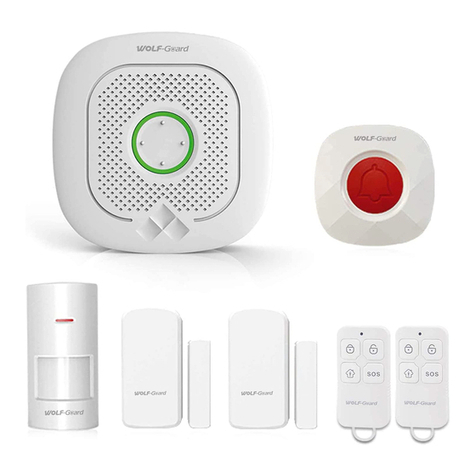
Wolf-Guard
Wolf-Guard WS03 user manual
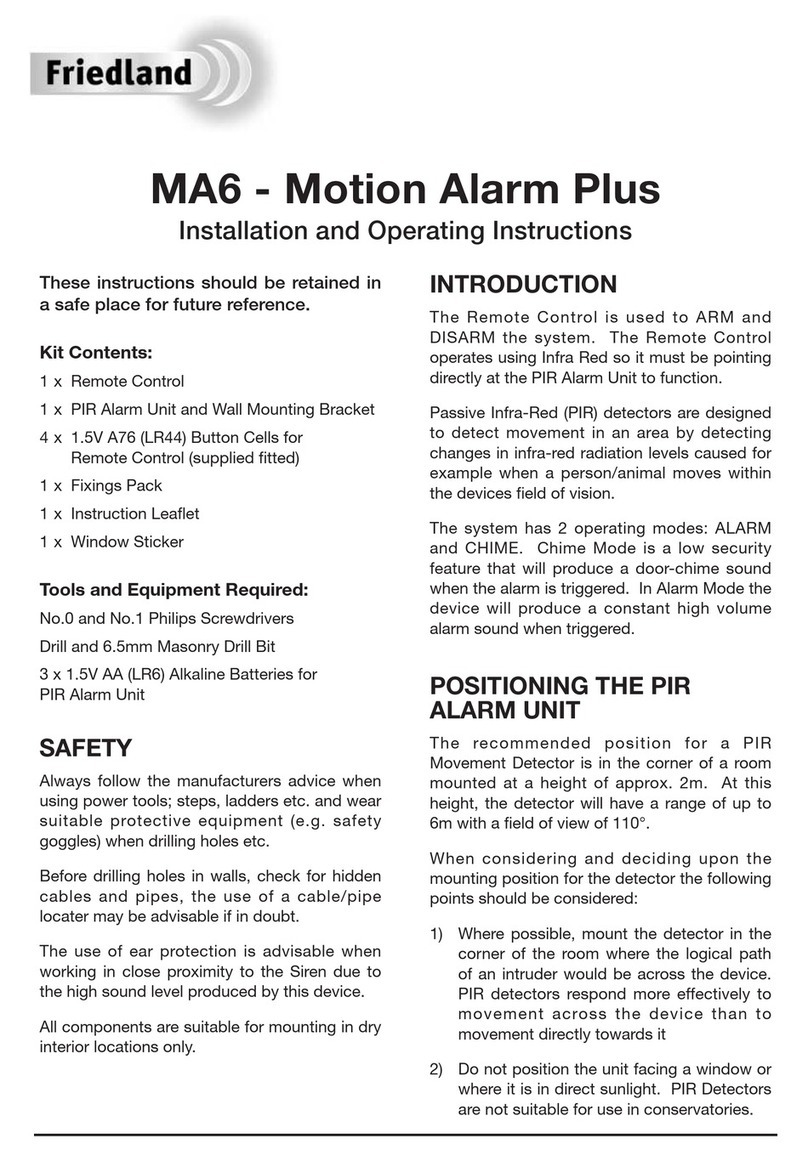
FRIEDLAND
FRIEDLAND MA6 Installation and operating instructions

DMP Electronics
DMP Electronics 1135 installation guide
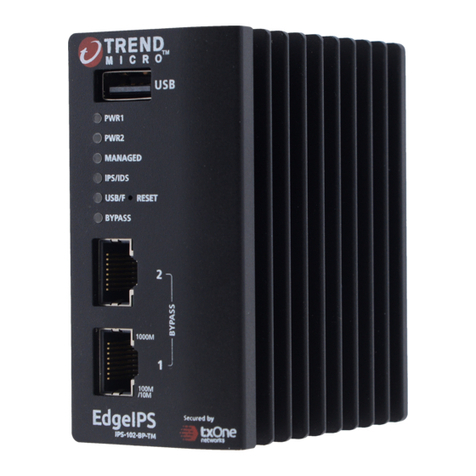
Trend Micro
Trend Micro txOne networks EdgeIPS IPS-102-BP-TM Quick setup guide
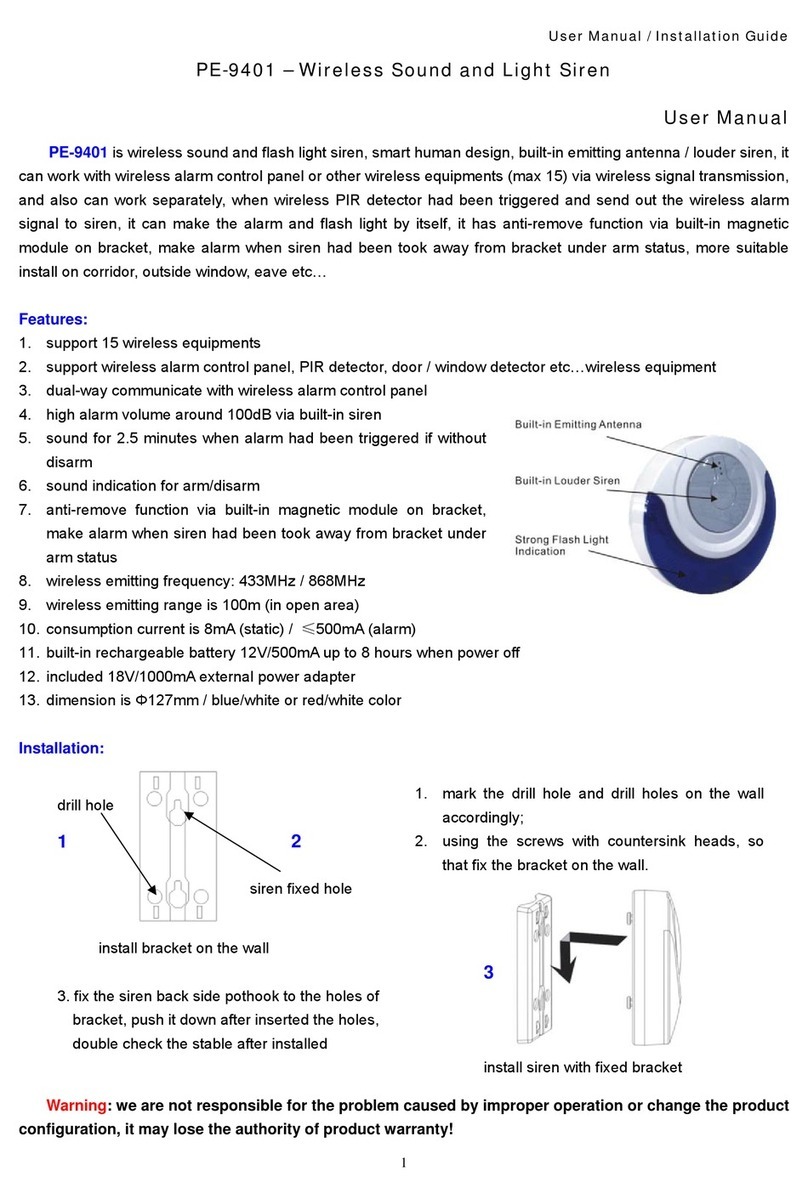
P&E
P&E PE-9401 User manual & installation guide
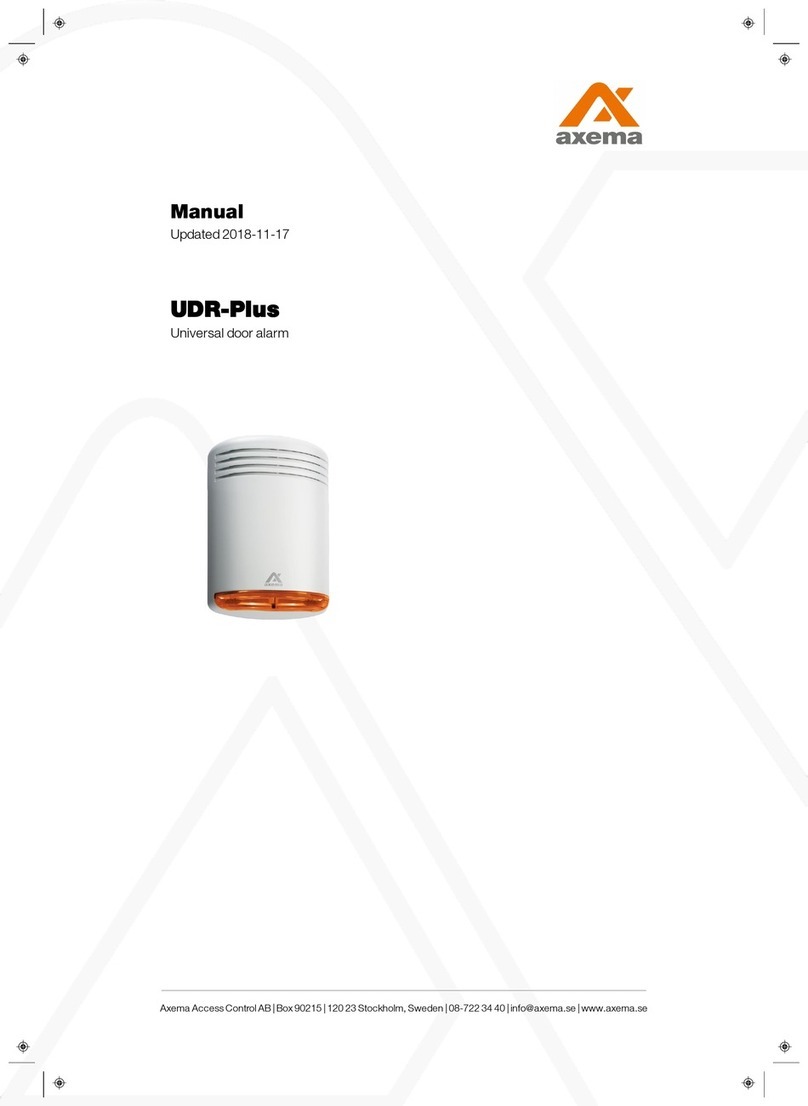
Axema
Axema UDR-Plus manual
